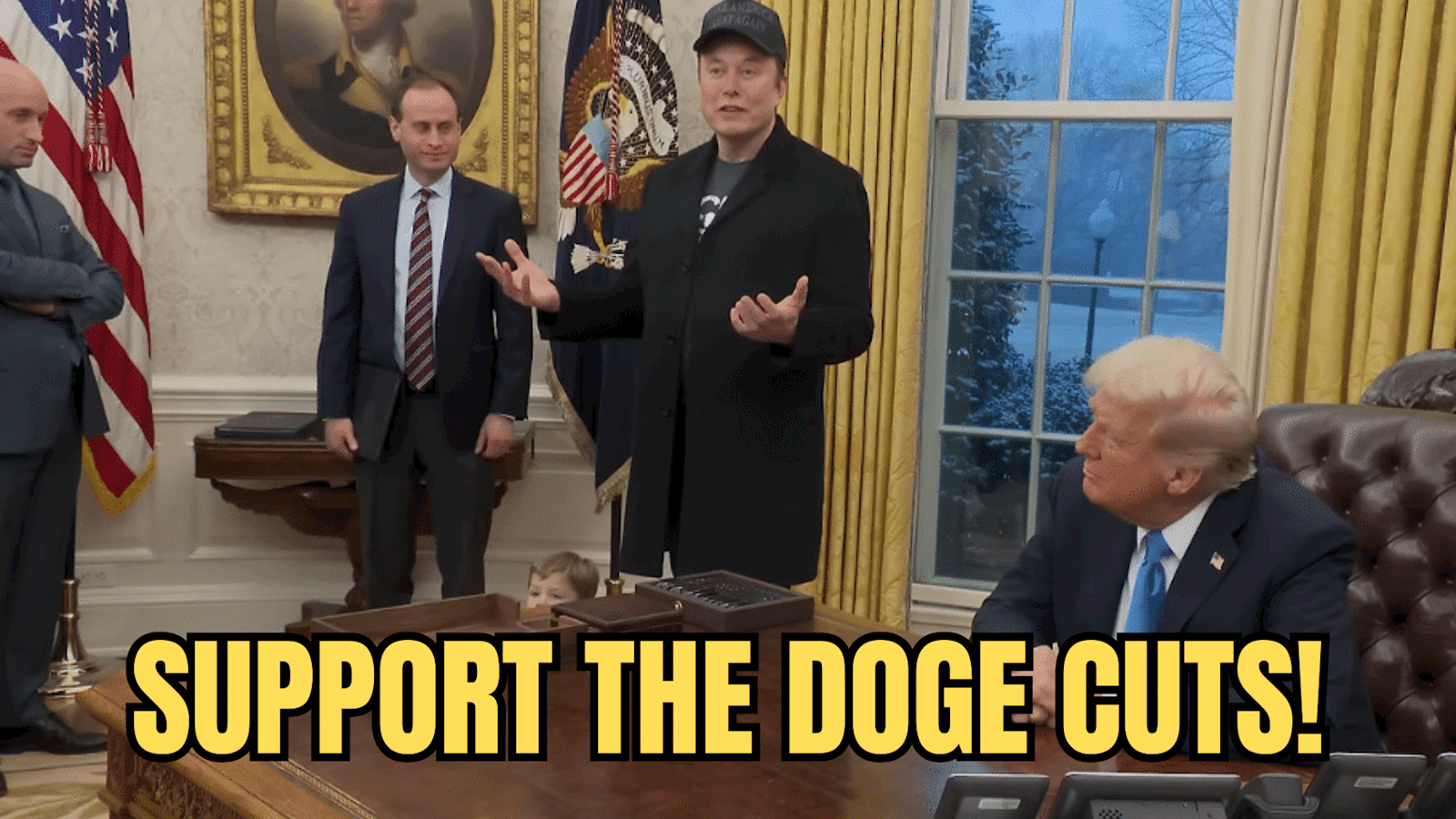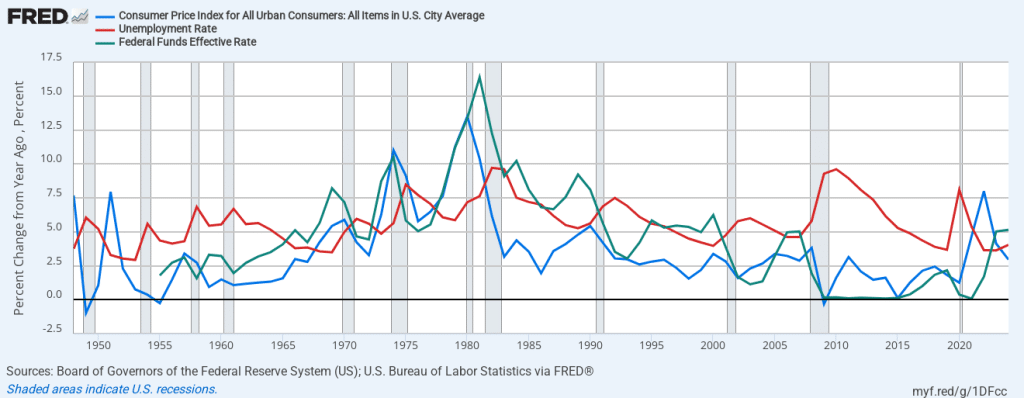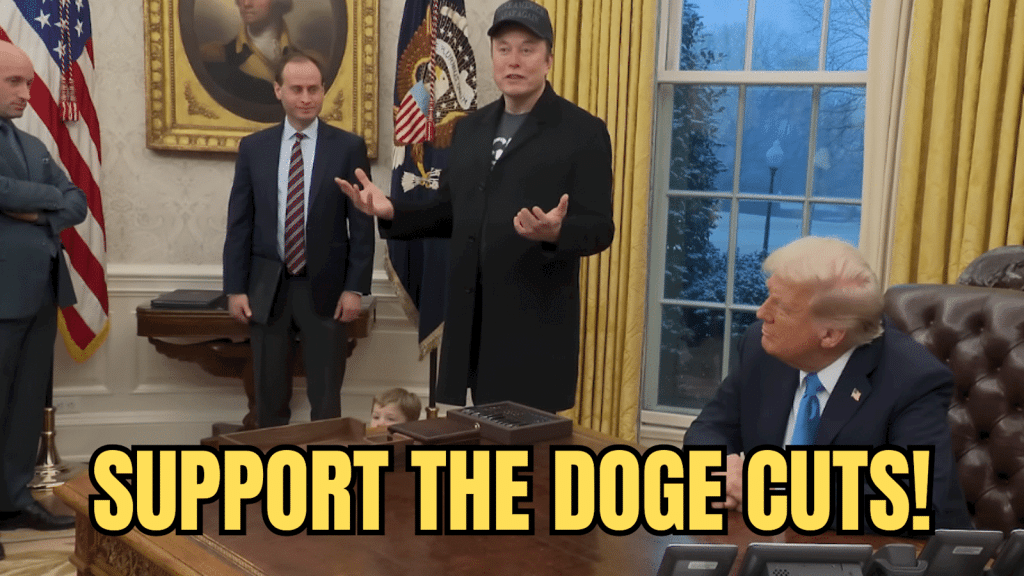
February 13, 2025
Permission to republish original opeds and cartoons granted.
Inflation Accelerated At The End Of Biden’s Term As Trump Seeks To Cut Spending, Regulations And Boost Production
| 
|
|
Both consumer and producer inflation accelerated as former President Joe Biden left office in January and President Donald Trump was sworn into office on Jan. 20, to annual rates of 3 percent and 3.5 percent, respectively, according to the latest data compiled by the Bureau of Labor Statistics. Besides illegal immigration and the border, inflation and the U.S. economy were top issues in the election that almost certainly helped President to oust the incumbent Biden-Harris administration and secure a second term of office as American households watched the cost of living far outpace the growth of incomes. Inflation is a cruel tax and, politically, it is non-partisan, with spikes in consumer prices and corresponding recessions in the past preceding the ouster of Gerald Ford, Jimmy Carter and George H.W. Bush, all one-term presidents, who although each had policies that addressed the economy, could never overcome public discontent over the state of affairs. And so it was with Biden and the Democrats’ nominee in 2024, former Vice President Kamala Harris. No matter if the Democratic-controlled Congress in 2021 and 2022 passed bills like the so-called Inflation Reduction Act, or all of the assurances how prices were “coming down” when merely the pace of increases had slowed down and prices had not decreased at all, no amount of happy talk was enough to save Biden, who was deposed by his own party, and later Harris, who inherited all of the advantages — and disadvantages, as it turned out — of being the incumbent even as she failingly attempted to rebrand herself as a “new face”. Inflation is too much money chasing too few goods, and Biden-Harris had both. Optimistically, with the assistance of the U.S. Treasury, the White House Department of Government Efficiency (DOGE) and Republican majorities in the House and Senate, President Donald Trump and DOGE head Elon Musk believe that the deficit can be cut in half, and Trump hopes to make up the rest by boosting revenue with tariffs from goods abroad and onshoring production, boosting the economy overall and hopefully lowering prices. |
Rescore the Green New Deal (IRA) Tax Cuts to Find Room for Real Cuts
| 
|
|
Former President Joe Biden and his Democrat cronies piled a series of green incentive tax cuts into the faux Inflation Reduction Act in 2022. Now that those government subsidies masquerading as tax cuts have had time to ripen, it is clear that they are far more costly to the federal government’s bottom line than the Congressional Budget Office claimed. As House and Senate Republicans consider how to pass the big, beautiful budget reconciliation bill, it would be foolish to leave the social engineering green subsidies intact. While politically difficult in some districts, it will be much easier to explain to Social Security recipients that green subsidies were ended in order to ending double taxation on their earned retirement check, than to explain why you didn’t. Congress should pass the extension of the Trump tax cuts, the ending of federal taxes on overtime pay and tips, as well as the onerous double taxation of Social Security payments now and let the positive economic benefits flow as their economic impact takes hold in late 2025 and throughout 2026, while ending Joe Biden’s green money grab. And the first step is to get each of the Biden green new deal tax subsidies rescored based upon new, knowable data so they can be used to offset the GOP economic agenda. |
Urge Congress To Support The DOGE Spending Cuts Proposed!
| 
|
|
Washington waste is out of control, and the Department of Government Efficiency (DOGE) was created to stop the fraud, cut the abuse, and hold bureaucrats accountable. But now, an activist judge—backed by 19 Democratic attorneys general—has blocked DOGE from doing its job, violating Article II of the Constitution and undermining the President’s authority. While they tie the hands of those fighting corruption, our tax dollars are being drained by fraud and abuse: USAID funds are flowing to Hamas through the UN, putting American security at risk. Up to $100 billion a year is being paid to individuals without Social Security numbers. FEMA is housing illegal immigrants in luxury hotels, while Americans in North Carolina struggle after disasters. This is a direct attack on our government, our tax dollars, and our Constitutional order. We cannot let unelected judges strip away executive powers and protect corruption! Your voice matters! Email your Senators and Representatives today and demand they stand with DOGE, fight judicial overreach, and stop the abuse of taxpayer dollars! |
Inflation Accelerated At The End Of Biden’s Term As Trump Seeks To Cut Spending, Regulations And Boost Production

By Robert Romano
Both consumer and producer inflation accelerated as former President Joe Biden left office in January and President Donald Trump was sworn into office on Jan. 20, to annual rates of 3 percent and 3.5 percent, respectively, according to the latest data compiled by the Bureau of Labor Statistics.
Besides illegal immigration and the border, inflation and the U.S. economy were top issues in the election that almost certainly helped President to oust the incumbent Biden-Harris administration and secure a second term of office as American households watched the cost of living far outpace the growth of incomes.
Inflation is a cruel tax and, politically, it is non-partisan, with spikes in consumer prices and corresponding recessions in the past preceding the ouster of Gerald Ford, Jimmy Carter and George H.W. Bush, all one-term presidents, who although each had policies that addressed the economy, could never overcome public discontent over the state of affairs.
And so it was with Biden and the Democrats’ nominee in 2024, former Vice President Kamala Harris. No matter if the Democratic-controlled Congress in 2021 and 2022 passed bills like the so-called Inflation Reduction Act, or all of the assurances how prices were “coming down” when merely the pace of increases had slowed down and prices had not decreased at all, no amount of happy talk was enough to save Biden, who was deposed by his own party, and later Harris, who inherited all of the advantages — and disadvantages, as it turned out — of being the incumbent even as she failingly attempted to rebrand herself as a “new face”.
In 1981, Ronald Reagan inherited a very similar problem. The 1980 recession was particularly bad with inflation hitting 13.5 percent and unemployment hitting 7.2 percent, and so Jimmy Carter lost in a landslide to Reagan. But it turned out, the economic turbulence was not through yet, with inflation still at 10.1 percent in 1981 and unemployment rising to 7.6 percent, and in 1982 recession hit and while inflation slowed to 6.15 percent, unemployment rose to 9.7 percent. This hurt somewhat politically as Republicans lost 26 seats in the House but were still able to retain the Senate with no seats lost.

To kill the inflation, in 1981, Reagan and Federal Reserve Chairman Paul Volcker took the Federal Funds Rate all the way up to 16.4 percent and then kept it above that of the consumer inflation rate, which by 1983 had gone all the way down to 3.1 percent, but unemployment was still high coming out of the recession, at 9.6 percent. Fortunately for Reagan, he and the economy took its medicine and in 1984, unemployment dropped to 7.5 percent, and although inflation ticked up slightly to 4.36 percent, Reagan was still easily reelected. Killing the inflation was the most important thing.
The key consideration: It was really, really hard. Coming into office, the U.S. had just come out of one recession, and it would take aggressive policies to strengthen the dollar and raise interest rates — usually not great for economic growth and labor markets — that broke inflation’s back. Reagan coupled it with tax relief in order to create future circumstances that once the bottom was hit, the U.S. economy would take off like a rocket ship, which it did, amid technological innovations and a relaxed regulatory environment.
Now, Trump wants to emulate Reagan in part, as he did in his first term, by cutting taxes and regulations again and boosting production, but also to cut spending, something Reagan failed to achieve as the national debt has climbed an average of more than 8 percent since 1980.
Optimistically, with the assistance of the U.S. Treasury, the White House Department of Government Efficiency (DOGE) and Republican majorities in the House and Senate, Trump and DOGE head Elon Musk believe that the deficit can be cut in half, and Trump hopes to make up the rest by boosting revenue with tariffs from goods abroad and onshoring production, boosting the economy overall, which always increases revenues and hopefully lowering prices.
Inflation, after all, is too much money chasing too few goods, so to lower prices or just merely slow down the growth of prices to a rate lower than the rate of increase of incomes--boosting purchasing power—the two things to do is to reduce the money supply and to increase domestic production energy, food and everything else to boost supplies.
On reducing the money supply, there are of course spending cuts, which will reduce the need to borrow money and monetize the debt by printing more money, but there are also interest rates and then perhaps the biggest one, the ability to strengthen the U.S. dollar. When the dollar is really strong, inflation can be all but eliminated, but it is important to remember that too much of something is not good either. In the 1930s when the dollar was too strong, it led to deflation, mass unemployment and the Great Depression.
Given the menu of options, it might feel a little bit like choosing your poison. But really it’s just picking your battles. In 2021, Biden chose inflation in order to prioritize lowering unemployment following Covid by continuing to artificially boost demand with more deficit spending, but too much of something wasn’t good, and by June 2022 inflation had peaked at 9.1 percent. By then, the Fed was hiking interest rates, the dollar strengthened and inflation began to slow down, but not before Democrats lost the House in 2022 and the White House and the Senate in 2024.
Unfortunately, there is a rather inverse relationship between inflation and unemployment that is very easy to identify in the charts. Want to lower unemployment? Sure, that can be done, just print more money, but expect inflation to rise as it did in 2021 and 2022. Want less inflation? Sure, there’s a way to do that by strengthening the dollar, but expect unemployment to rise, as it did in 2023 and 2024.
Sometimes, we have to teach our children, first this, then that. Biden tried to have his cake and eat it, too, imagining that he could lower unemployment, print trillions of dollars after Covid, stamp down energy and agriculture production without too much inflation, and when that turned out not to be true, to hike interest rates and strengthen the dollar without increasing unemployment and still get reelected, which also turned out not to be true. It was all a fantasy. Biden and Congress spent too much money and the Fed waited too long to hike rates and strengthen the dollar after the inflation accelerated, still operation on zero-bound rates as inflation hit 7.5 percent in Jan. 2022 before Russia invaded Ukraine.
But that is all hindsight. What matters is the here and now, and what to do next. If the top priority is to keep inflation down, Trump, who understands the tradeoffs between supply and demand, will also have to appreciate the economic tradeoffs between the economy running hot, which increases prices, and cool, which lowers prices. Yes, boost production, cut regulations, cut taxes, cut spending, and remember, if all else fails, the dollar is a powerful weapon as well — just don’t be afraid to use it with care.
Robert Romano is the Vice President of Public Policy at Americans for Limited Government Foundation.
To view online: https://dailytorch.com/2025/02/inflation-accelerated-at-the-end-of-bidens-term-as-trump-seeks-to-cut-spending-regulations-and-boost-production/
Rescore the Green New Deal (IRA) Tax Cuts to Find Room for Real Cuts

By Rick Manning
Former President Joe Biden and his Democrat cronies piled a series of green incentive tax cuts into the faux Inflation Reduction Act in 2022.
Now that those government subsidies masquerading as tax cuts have had time to ripen, it is clear that they are far more costly to the federal government’s bottom line than the Congressional Budget Office claimed.
Forbes Magazine published an article by Christine McDaniel in May of 2023 making a strong case that CBO estimates of costs for Wind Production Tax credits drastically underestimated the real costs to the Treasury.
In her analysis, Ms. McDaniel found that the real costs could be as much as four times the estimated $11.2 billion annually, increasing the subsidy to more than $40 billion to wealthy investors like Warren Buffett.
Remember it was Buffett who was quoted by US News in 2013 saying, "I will do anything that is basically covered by the law to reduce Berkshire's tax rate.”
Buffet explained, "For example, on wind energy, we get a tax credit if we build a lot of wind farms. That's the only reason to build them. They don't make sense without the tax credit."
While the Wind Production Tax Credit might be great for Warren Buffett’s bottom line, it stinks for the American people.
For example, if Ms. McDaniel’s mid-range estimate of the real cost of the Wind Production Tax Credit of $30 billion a year is accurate, just eliminating that one piece of billionaire pork would offset an estimated twenty percent of the elimination of taxes on tips.
As House and Senate Republicans consider how to pass the big, beautiful budget reconciliation bill, it would be foolish to leave the social engineering green subsidies intact.
While politically difficult in some districts, it will be much easier to explain to Social Security recipients that green subsidies were ended in order to ending double taxation on their earned retirement check, than to explain why you didn’t.
It will also be easier for GOP politicians to explain in high state income tax states, that their constituents were able to write off more of their state and local property and income taxes, because boondoggle green incentives were ended, than to explain why they failed to lessen the federal tax burden.
It is obvious that those who would submarine GDP increasing tax cuts to protect social engineering under the guise of inflation reduction, are not going to vote for any tax cut bill. So, there is no need to cater to them.
Congress should pass the extension of the Trump tax cuts, the ending of federal taxes on overtime pay and tips, as well as the onerous double taxation of Social Security payments now and let the positive economic benefits flow as their economic impact takes hold in late 2025 and throughout 2026, while ending Joe Biden’s green money grab.
And the first step is to get each of the Biden green new deal tax subsidies rescored based upon new, knowable data so they can be used to offset the GOP economic agenda.
It would be both politically and economically wise.
Rick Manning is the President of Americans for Limited Government.
To view online: https://dailytorch.com/2025/02/rescore-the-green-new-deal-ira-tax-cuts-to-find-room-for-real-cuts/
Urge Congress To Support The DOGE Spending Cuts Proposed!

To view online: https://www.votervoice.net/AFLG/campaigns/121532/respond
